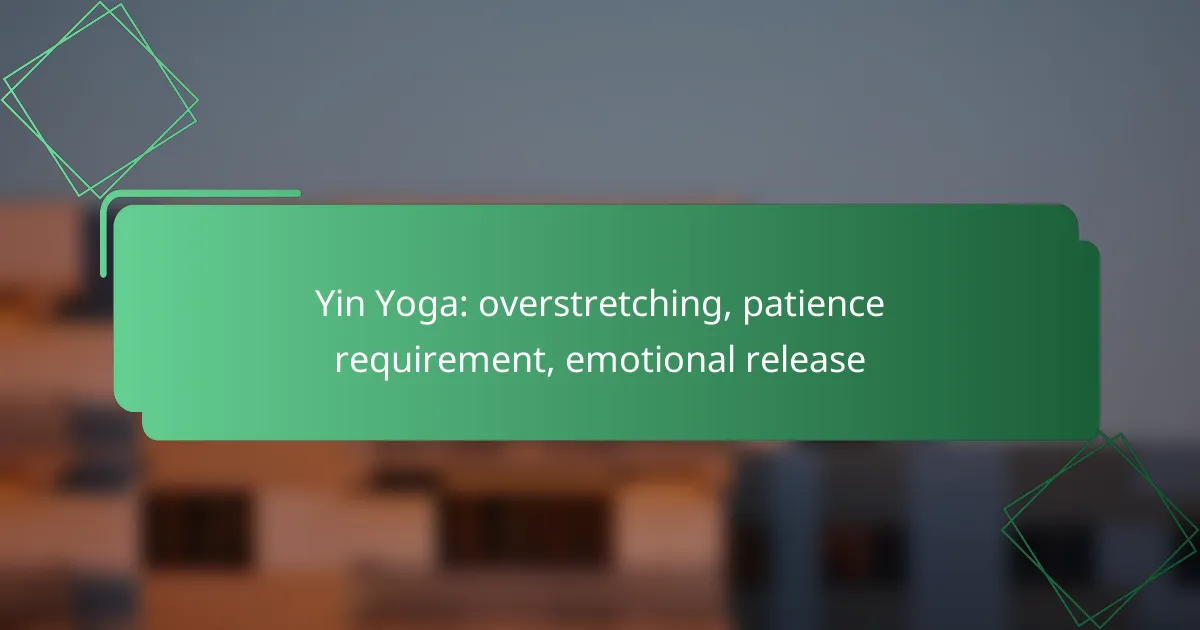Hatha Yoga offers numerous benefits, but it also carries risks of injury if not practiced mindfully. To ensure a safe experience, practitioners should prioritize proper alignment, listen to their bodies, and recognize signs of overexertion. Utilizing supportive props and seeking guidance from certified instructors can further enhance safety and effectiveness during practice.

How to prevent injuries in Hatha Yoga?
To prevent injuries in Hatha Yoga, focus on proper alignment, listen to your body, and utilize supportive props. Incorporating a warm-up routine and seeking guidance from certified instructors can further enhance safety and effectiveness during practice.
Proper warm-up routines
Engaging in a proper warm-up routine is essential to prepare your body for Hatha Yoga. Start with gentle stretches and movements that gradually increase your heart rate and loosen your muscles. Aim for a warm-up lasting around 10 to 15 minutes to effectively reduce the risk of injury.
Consider including dynamic stretches such as arm circles, torso twists, and leg swings. These movements help to increase blood flow and flexibility, making it easier to transition into more challenging poses.
Use of props for support
Using props, such as blocks, straps, and bolsters, can significantly enhance your practice and prevent injuries. Props provide additional support, allowing you to maintain proper alignment and deepen your stretches without overexerting yourself.
For example, if you struggle with balance in poses like Tree Pose, a block can help stabilize you. Straps can assist in reaching your feet during seated stretches, ensuring you avoid straining your muscles.
Listening to your body
Listening to your body is crucial in preventing injuries during Hatha Yoga. Pay attention to any discomfort or pain and modify poses accordingly. If a position feels too challenging, it’s better to ease back rather than push through the discomfort.
Establish a practice of checking in with yourself throughout the session. If you notice fatigue or strain, take a break or switch to a gentler pose. This self-awareness can help you maintain a safe and enjoyable practice.
Guidance from certified instructors
Seeking guidance from certified instructors is vital for safe Hatha Yoga practice. Instructors can provide personalized feedback on your alignment and technique, helping you avoid common pitfalls that lead to injuries.
Consider attending classes led by instructors with recognized certifications, such as Yoga Alliance. They can offer modifications tailored to your skill level and ensure you are practicing safely and effectively.
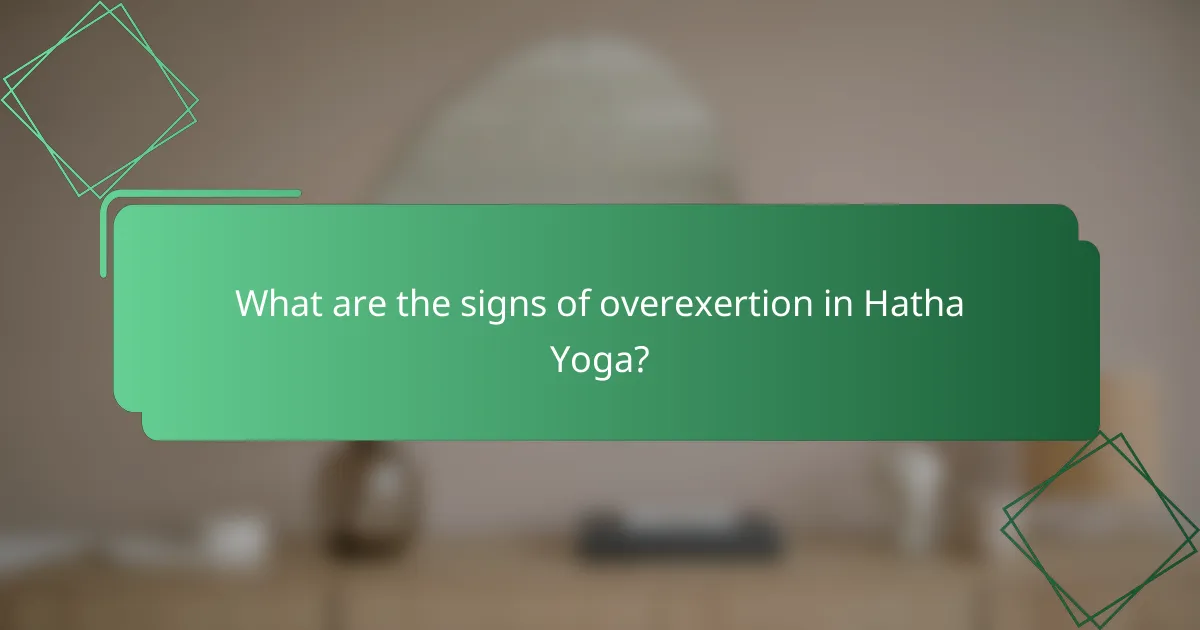
What are the signs of overexertion in Hatha Yoga?
Signs of overexertion in Hatha Yoga include excessive fatigue, pain during practice, and an increased heart rate. Recognizing these indicators can help practitioners adjust their routines to prevent injury and ensure a safe practice.
Excessive fatigue
Excessive fatigue is a common sign of overexertion in Hatha Yoga. If you find yourself feeling unusually tired or drained after a session, it may indicate that you are pushing your body beyond its limits.
To manage fatigue, consider reducing the duration or intensity of your practice. Aim for shorter sessions, especially if you’re new to yoga or returning after a break, and gradually increase the challenge as your body adapts.
Pain during practice
Experiencing pain during practice is a clear warning sign of overexertion. This pain can manifest in various forms, such as sharp discomfort in joints or muscles, and should not be ignored.
If you encounter pain, immediately modify your poses or take a break. Use props for support and ensure you are maintaining proper alignment to minimize the risk of injury. Listening to your body is crucial for a safe practice.
Increased heart rate
An increased heart rate can be another indicator of overexertion in Hatha Yoga. While a slight elevation in heart rate is normal during physical activity, a significant increase may signal that you are working too hard.
Monitor your heart rate during practice, especially if you have any pre-existing health conditions. If your heart rate rises excessively, consider slowing down or taking a moment to rest. Staying within a comfortable range is essential for maintaining a balanced practice.
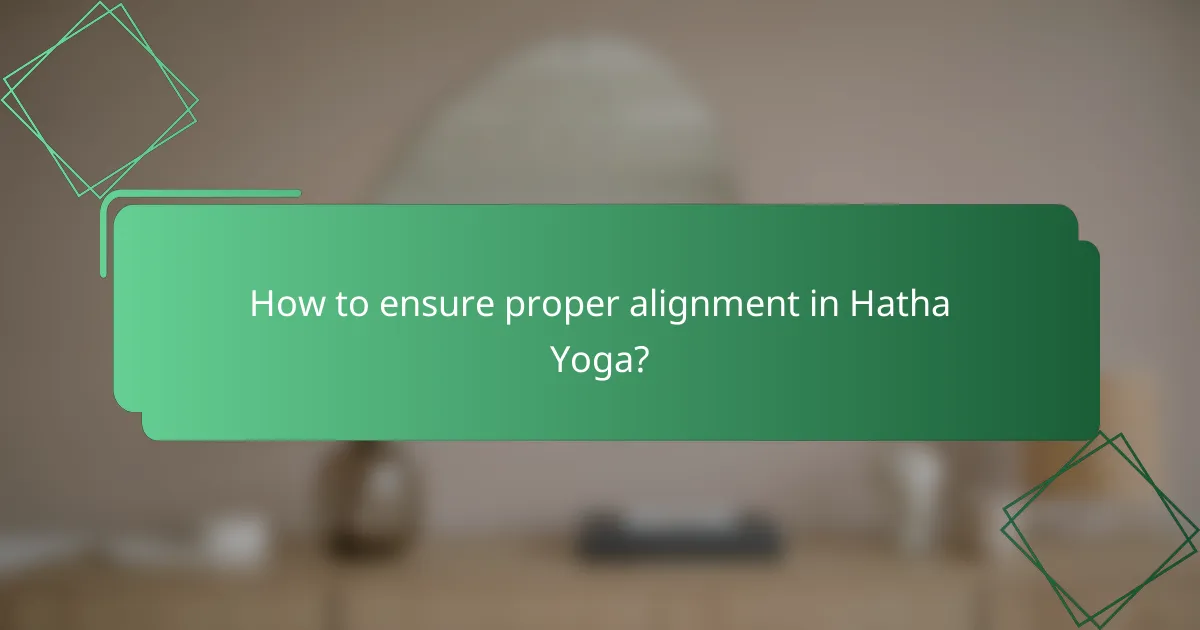
How to ensure proper alignment in Hatha Yoga?
Ensuring proper alignment in Hatha Yoga is crucial for preventing injuries and enhancing the effectiveness of your practice. Focus on foundational poses, seek regular feedback from instructors, and utilize mirrors for self-assessment to maintain correct alignment throughout your sessions.
Focus on foundational poses
Foundational poses serve as the building blocks for more complex postures in Hatha Yoga. Prioritize mastering poses like Mountain Pose, Downward Dog, and Warrior I, as they establish a strong alignment framework. Spend extra time in these poses to develop muscle memory and body awareness.
When practicing foundational poses, pay attention to your feet, hips, and shoulders. Ensure they are aligned properly to avoid strain and enhance stability. Regularly revisit these basic poses, even as you progress to more advanced variations.
Regular feedback from instructors
Receiving regular feedback from qualified instructors is essential for maintaining proper alignment in Hatha Yoga. Instructors can provide personalized adjustments and corrections that you might not notice on your own. Attend classes where instructors can observe your practice closely.
Consider asking for specific feedback on your alignment during poses. This can help you understand your body’s tendencies and make necessary adjustments. Group classes or private sessions can both be beneficial, depending on your learning style.
Utilizing mirrors for self-assessment
Mirrors can be a valuable tool for self-assessment in Hatha Yoga. By observing your reflection, you can identify misalignments and adjust your posture accordingly. Position yourself in front of a mirror during practice to enhance your awareness of body alignment.
While using mirrors, focus on key alignment points such as the position of your spine, hips, and limbs. This visual feedback can help reinforce correct alignment habits. However, avoid becoming overly critical of your appearance; focus instead on the alignment of your body in each pose.
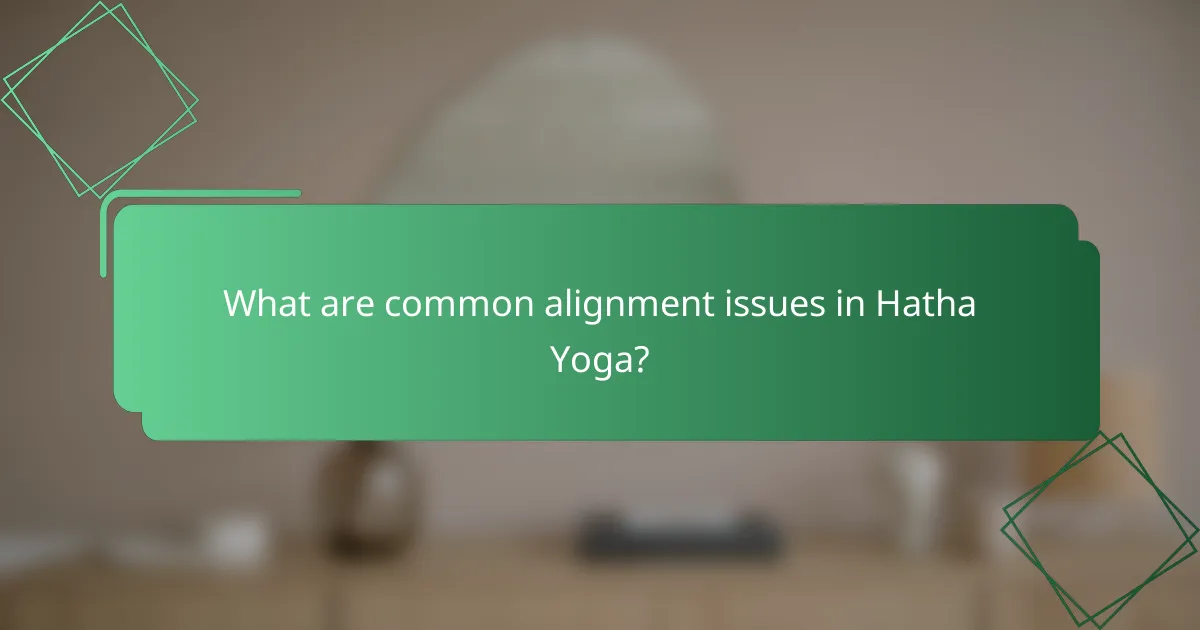
What are common alignment issues in Hatha Yoga?
Common alignment issues in Hatha Yoga can lead to discomfort and injury if not addressed. These issues often arise from improper posture and technique during poses, affecting the body’s balance and stability.
Misalignment in standing poses
Misalignment in standing poses often occurs when practitioners do not properly engage their feet and legs. For example, in poses like Warrior I and II, the front knee should be directly above the ankle to avoid strain. Regularly checking your alignment in the mirror or using a wall for support can help maintain proper form.
Common pitfalls include letting the knee collapse inward or overextending the back leg. To avoid these issues, focus on grounding your feet and distributing weight evenly across both legs.
Incorrect spinal alignment
Incorrect spinal alignment can lead to back pain and discomfort during Hatha Yoga practice. A neutral spine is crucial; this means maintaining its natural curves without excessive arching or rounding. In poses like Downward Dog, ensure your spine is straight and your head is aligned with your arms.
To check your spinal alignment, consider using a mirror or asking a teacher for feedback. Avoid pushing into poses too deeply, as this can compromise your spinal integrity.
Overextension of joints
Overextension of joints is a common issue in Hatha Yoga, particularly in poses that require deep bending or stretching. For instance, in forward bends, hyperextension of the knees can occur if you push too far without proper support. Always listen to your body and respect its limits.
To prevent overextension, use props like blocks or straps to assist in achieving depth without compromising joint safety. Focus on maintaining a slight bend in the joints when necessary to protect them from strain.
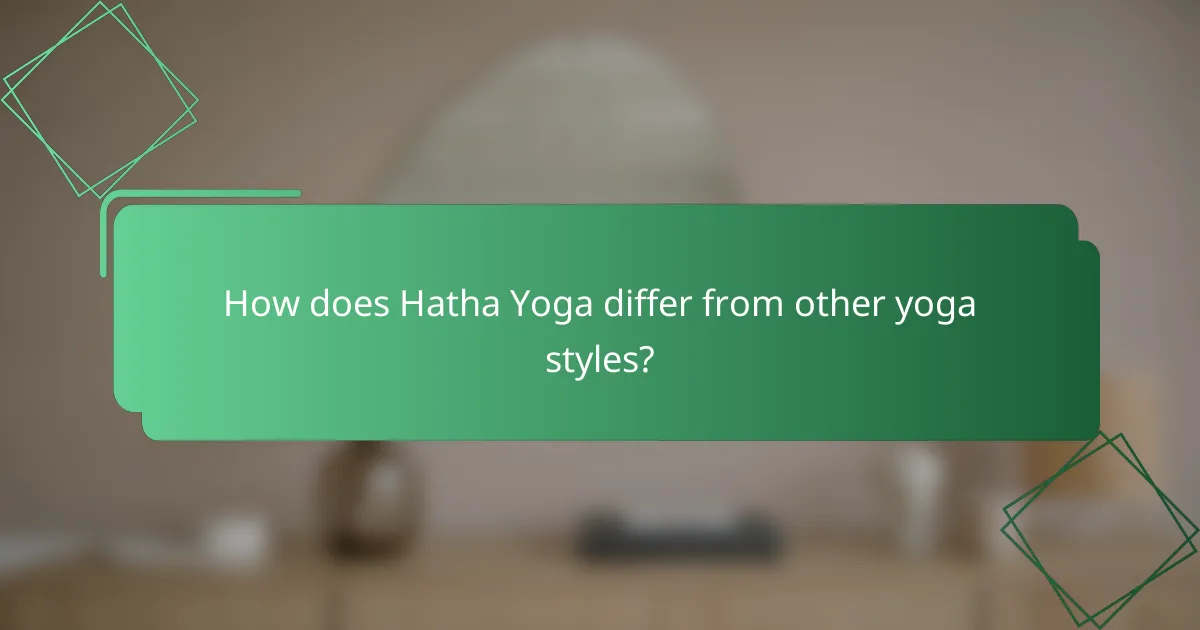
How does Hatha Yoga differ from other yoga styles?
Hatha Yoga emphasizes physical postures and breathing techniques, making it distinct from more dynamic styles like Vinyasa or Ashtanga. While all yoga forms aim for mental and physical balance, Hatha focuses primarily on alignment and foundational poses, catering to beginners and those seeking a slower pace.
Focus on physical postures
Hatha Yoga centers on a variety of physical postures, or asanas, which are designed to improve strength, flexibility, and balance. Practitioners typically hold poses for longer durations compared to more fast-paced styles, allowing for deeper engagement with each posture.
Common Hatha poses include Downward Dog, Warrior I, and Tree Pose. Each of these positions requires attention to alignment and breath, which helps prevent injuries and enhances the overall practice. Beginners should focus on mastering basic postures before progressing to more advanced variations.
To avoid overexertion, it’s crucial to listen to your body and modify poses as needed. Using props like blocks or straps can assist in maintaining proper alignment without straining, ensuring a safer and more effective practice.







